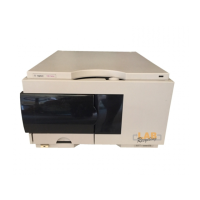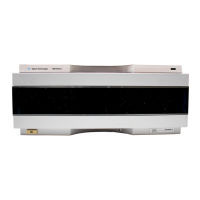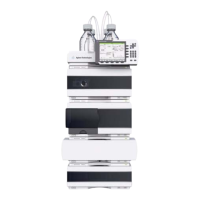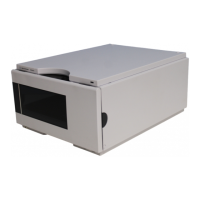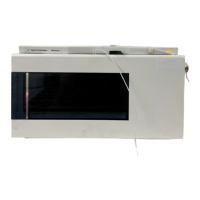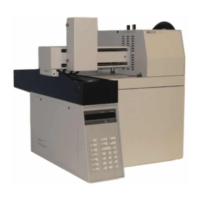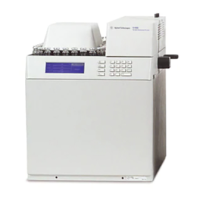1200 Series Quarternary Pump User Manual 11
Introduction
1
Overview of the Hydraulic Path
How Does the Pump Work?
The liquid runs from the solvent reservoir through the degasser to the MCGV
and from there to the active inlet valve. The pump assembly comprises two
substantially identical plunger/chamber units. Both plunger/chamber units
comprise a ball-screw drive and a pump head with one sapphire plunger for
reciprocating movement in it.
A servo-controlled variable reluctance motor drives the two ball-screw drives
in opposite directions. The gears for the ball-screw drives have different
circumferences (ratio 2:1) allowing the first plunger to move at twice the speed
of the second plunger. The solvent enters the pump head close to the bottom
limit and leaves it at its top. The outer diameter of the plunger is smaller than
the inner diameter of the pump head chamber allowing the solvent to fill the
gap in between. The first plunger has a stroke volume in the range of 20–100 µl
depending on the flow rate. The microprocessor controls all flow rates in a
range of 1 µl–10 ml/min. The inlet of the first plunger/chamber unit is
connected to the active inlet valve which is processor-controlled opened or
closed allowing solvent to be drawn into the first plunger pump unit.variable
reluctance motor drives the two ball-screw drives in opposite directions. The
gears for the ball-screw drives have different circumferences (ratio 2:1)
allowing the first plunger to move at twice the speed of the second plunger.
The solvent enters the pump head close to the bottom limit and leaves it at its
top. The outer diameter of the plunger is smaller than the inner diameter of
the pump head chamber allowing the solvent to fill the gap in between.
The outlet of the first plunger/chamber unit is connected through the outlet
ball valve and the damping unit to the inlet of the second plunger/chamber
unit. The outlet of the purge valve assembly is then connected to the following
chromatographic system.
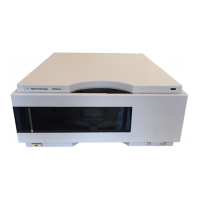
